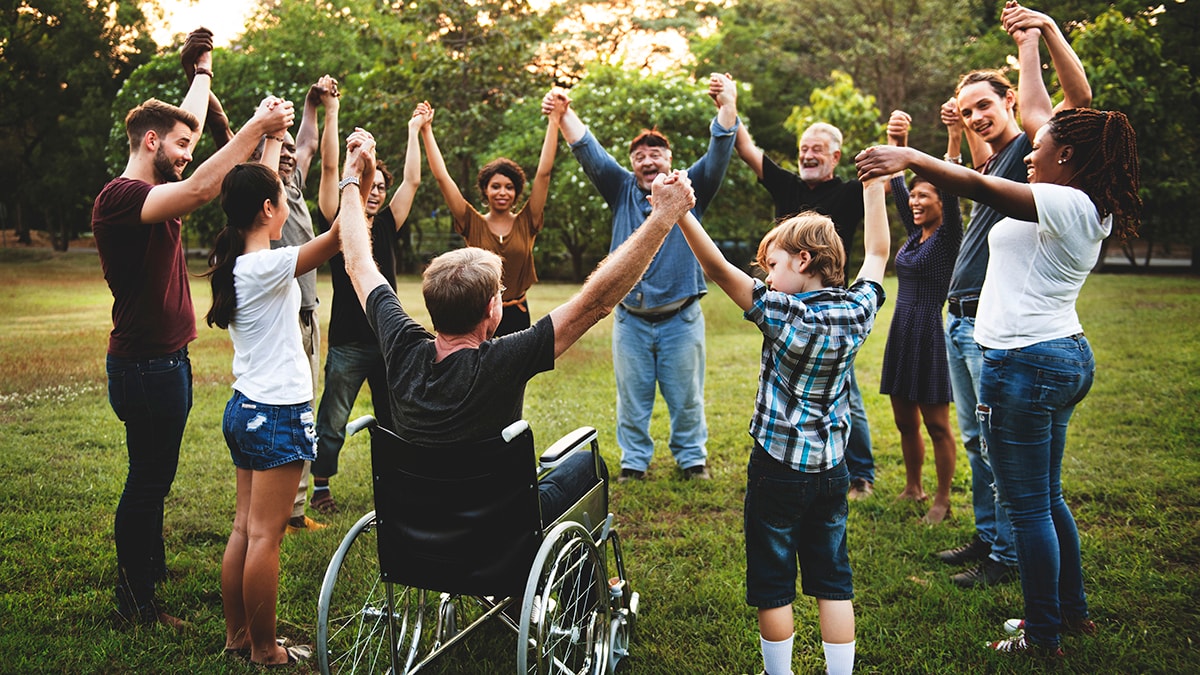Key points
- Suicide is a leading cause of death and affects people of all ages.
- Suicide is a serious public health problem and has far-reaching impact.
- Resources are available to prevent suicide.
- Hope is possible.

Leading cause of death
Suicide is death caused by injuring oneself with the intent to die. A suicide attempt is when someone harms themselves with any intent to end their life, but they do not die because of their actions.
Many factors can increase the risk for suicide or protect against it. Suicide is connected to other forms of injury and violence. For example, people who have experienced violence, including child abuse, bullying, or sexual violence have a higher suicide risk. Being connected to family and community support and having easy access to healthcare can decrease suicidal thoughts and behaviors.1
Serious public health problem

Suicide rates increased approximately 36% between 2000–2022. Suicide was responsible for 49,316 deaths in 2023, which is about one death every 11 minutes.2 The number of people who think about or attempt suicide is even higher. In 2022, an estimated 12.8 million adults seriously thought about suicide, 3.7 million planned a suicide attempt, and 1.5 million attempted suicide.3
Suicide affects people of all ages.
In 2023, suicide was among the top 8 leading causes of death for people ages 10-64. Suicide was the second leading cause of death for people ages 10-34.2
Some groups have higher suicide rates than others.
Suicide rates vary by race/ethnicity, age, and other factors, such as where someone lives. By race/ethnicity, the groups with the highest rates are non-Hispanic American Indian/Alaska Native people followed by non-Hispanic White people.2 Other Americans with higher-than-average rates of suicide are veterans, people who live in rural areas, and workers in certain industries and occupations like mining and construction.14 Young people who identify as lesbian, gay, or bisexual have higher prevalence of suicidal thoughts and behavior compared to their peers who identify as heterosexual.5 Read more about these suicide disparities and why they exist on the Health Disparities in Suicide webpage.
Far-reaching impact

Suicide and suicide attempts cause serious emotional, physical, and economic impacts. People who attempt suicide and survive may experience serious injuries that can have long-term effects on their health. They may also experience depression and other mental health concerns.6
Suicide and suicide attempts affect the health and well-being of friends, loved ones, co-workers, and the community. When people die by suicide, their surviving family and friends may experience prolonged grief, shock, anger, guilt, symptoms of depression or anxiety, and even thoughts of suicide themselves.67
The financial toll of suicide on society is also costly. In 2020, suicide and nonfatal self-harm cost the nation over $500 billion in medical costs, work loss costs, value of statistical life, and quality of life costs.
Suicidal behavior also has far-reaching impact.
There were 49,266 suicides among individuals ages 12 and older in 2023. But suicides are just the tip of the iceberg. For every suicide death*, there were about:
- 10 emergency department visits for self-harm**
- 48 self-reported suicide attempts in the past year***3
- 325 people who seriously considered suicide in the past year***3
*CDC National Center for Health Statistics (NCHS), National Vital Statistics System, Mortality 2018-2023 on CDC WONDER Online Database CDC WONDER
**CDC WISQARS (2023)
*** Substance Abuse and Mental Health Services Administration (SAMHSA) National Survey on Drug Use and Health (NSDUH) Key Substance Use and Mental Health Indicators in the United States: Results from the 2023 National Survey on Drug Use and Health
Suicide Prevention Resource for Action
Suicide is preventable. Everyone has a role to play to save lives and create healthy and strong individuals, families, and communities. Suicide prevention requires a comprehensive public health approach. CDC developed the Suicide Prevention Resource for Action (Prevention Resource), which provides information on the best available evidence for suicide prevention. States and communities can use the Prevention Resource to help make decisions about suicide prevention activities. Strategies range from those designed to support people at increased risk to a focus on the whole population, regardless of risk.
Strengthen economic supports
- Improve household financial security
- Stabilize housing
Create protective environments
- Reduce access to lethal means among persons at risk of suicide
- Create healthy organizational policies and culture
- Reduce substance use through community-based policies and practices
Improve access and delivery of suicide care
- Cover mental health conditions in health insurance policies
- Increase provider availability in underserved areas
- Provide rapid and remote access to help
- Create safer suicide care through systems change
Promote healthy connections
- Promote healthy peer norms
- Engage community members in shared activities
Teach coping and problem-solving skills
- Support social-emotional learning programs
- Teach parenting skills to improve family relationships
- Support resilience through education programs
Identify and support people at risk
- Train gatekeepers
- Respond to crises
- Plan for safety and follow-up after an attempt
- Provide therapeutic approaches
Lessen harms and prevent future risk
- Intervene after a suicide (postvention)
- Report and message about suicide safely
Need help? Know someone who does?
Contact the 988 Suicide and Crisis Lifeline if you are experiencing mental health-related distress or are worried about a loved one who may need crisis support.
- Call or text 988
- Chat at 988lifeline.org
Connect with a trained crisis counselor. 988 is confidential, free, and available 24/7/365.
Visit the 988 Suicide and Crisis Lifeline for more information at 988lifeline.org.
- Centers for Disease Control and Prevention. (2022). Suicide Prevention Resource for Action: A Compilation of the Best Available Evidence. Atlanta, GA: National Center for Injury Prevention and Control, Centers for Disease Control and Prevention.
- National Vital Statistics System, Mortality 2018-2022 on CDC WONDER Online Database, released in 2024. Data are from the Multiple Cause of Death Files, 2018-2022, as compiled from data provided by the 57 vital statistics jurisdictions through the Vital Statistics Cooperative Program. Accessed at http://wonder.cdc.gov/mcd-icd10-expanded.html on April 23, 2024
- Substance Abuse and Mental Health Services Administration. (2023). Key substance use and mental health indicators in the United States: Results from the 2022 National Survey on Drug Use and Health Center for Behavioral Health Statistics and Quality, Substance Abuse and Mental Health Services Administration. https://www.samhsa.gov/data/sites/default/files/reports/rpt42731/2022-nsduh-nnr.pdf
- Peterson C, Sussell A, Li J, Schumacher P, Yeoman K, Stone D. (2020) Suicide Rates by Industry and Occupation — National Violent Death Reporting System, 32 States, 2016. MMWR Morb Mortal Wkly Rep; 69: 57–62. DOI: http://dx.doi.org/10.15585/mmwr.mm6903a1.
- Centers for Disease Control and Prevention (CDC). Youth Risk Behavior Survey Data Summary and Trends Report: 2011-2021. Available at https://www.cdc.gov/healthyyouth/data/yrbs/pdf/YRBS_Data-Summary-Trends_Report2023_508.pdf [PDF – 10 MB].
- Hamdan, S., Berkman, N., Lavi, N., Levy, S., Brent, D. (2020). The effect of sudden death bereavement on the risk for suicide. Crisis; 41(3):214–224. DOI: https://doi.org/10.1027/0227-5910/a000635.
- Wagner, B., Hofmann, L., Grafiadeli, R. (2021). The relationship between guilt, depression, prolonged grief, and posttraumatic stress symptoms after suicide bereavement. J Clin Psychol; 77:2545–2558. DOI: https://doi.org/10.1002/jclp.23192.
